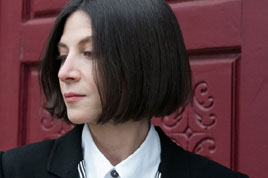Incest, Insanity And Murder - John Lanchester reviews The Little Friend by Donna Tartt
October 26, 2002
Southern Gothic is an American literary genre with no British equivalent. It uses lush prose with a strong sense of Southern literary heritage (Faulkner, Flannery O'Connor), is set in the former Confederacy, and features at least three of the following ingredients: insanity, incest, inbreeding, extreme meteorological phenomena, fundamentalist religion, corrupt preachers, slave-owner guilt, black rage, fading gentility, violent white trash, fragrant subtropical plants. At least one main character always dies.
Donna Tartt's second novel, The Little Friend, is a spacious and ambitious example of Southern Gothic. It begins with the unsolved, apparently motiveless murder of a nine-year-old boy, Robin Cleve, at his family home in Mississippi. Twelve years later his younger sister Harriet, less than a year old at the time of the murder, becomes obsessed with the desire to find out who killed her brother, and sets out to solve the crime. Her investigations get her, and almost everybody else, into big trouble.
The Little Friend is a work more of character and milieu than of plot - this being one of the many respects in which it differs from Tartt's first novel, The Secret History (1991). The book is dominated by two families, whom Tartt uses to explore and describe the world of the South. The Cleves are down-on-their-luck genteel, expelled by financial troubles from their ancestral mansion, Tribulation (an unimprovable Southern Gothic name). Harriet's mother is still-grieving, distracted, flaky; her grandmother, Edie, is ferocious; her great-aunts Tatt, Adelaide and Libby are respectively selfish, sexy and neurotic. Harriet is devoted to her underpaid, overworked "Negro" housekeeper Ida. She is clever and bookish, with a special keenness for - another nice Southern Gothic touch - Scott of the Antarctic.
The other family at the center of the book is that of the white trash Ratliffs. Grandmother Gum is the family matriarch, physically indestructible (she was given a month to live two decades ago), toxically racist, feared for cooking huge, inedible, compulsory, all-fried meals. Farish, the elder brother, has been psychotic ever since he shot himself in the head during a standoff with the police; since leaving prison he employs himself as a taxidermist and amphetamine manufacturer. Danny, his brother, the most presentable Ratliff, is Harriet's chief suspect for the old murder. Curtis, the third brother, is a simpleton ("I'm afret the Lord God didn't spend quite enough time on this one here," Gum explains). Eugene, the fourth brother, experienced a religious conversion following his near-blinding in a prison fight, and is now a preacher.
This range of characters, which comes with a fine selection of minor gargoyles, is one of The Little Friend's strengths. Another is the prose, which is rich, intelligent, and takes its time:"Robin had been a giddy, fickle child - somber at odd moments, practically hysterical at others - and, in life, this unpredictability had been a great part of his charm. But his younger sisters, who had never in any proper sense known him at all, nonetheless grew up certain of their dead brother's favorite color (red); his favorite book (The Wind in the Willows) and his favorite character in it (Mr Toad); his favorite flavor of ice cream (chocolate) ...and a thousand other things which they - being living children and preferring chocolate ice cream one week and peach the next - were not even sure they knew about themselves. Consequently their relationship with their dead brother was of the most intimate sort, his strong, bright, immutable character shining changelessly against the vagueness and vacillation of their own characters, and the characters of people that they knew; and they grew up believing that this was due to some rare, angelic incandescence of nature on Robin's part, and not to the fact that he was dead."
There is a lot to admire and enjoy in The Little Friend; too much so, in some respects, since the novel does lose momentum over its 555 pages. It is so different from The Secret History, so much less unified and plot-driven, that readers are bound to prefer one or the other book. Many will love the earlier novel more and I am, I think, one of them - though The Little Friend is in many respects the better book. Let's hope we don't have to wait another 10 years for Tartt's next novel.
+ + + Comments + + +



